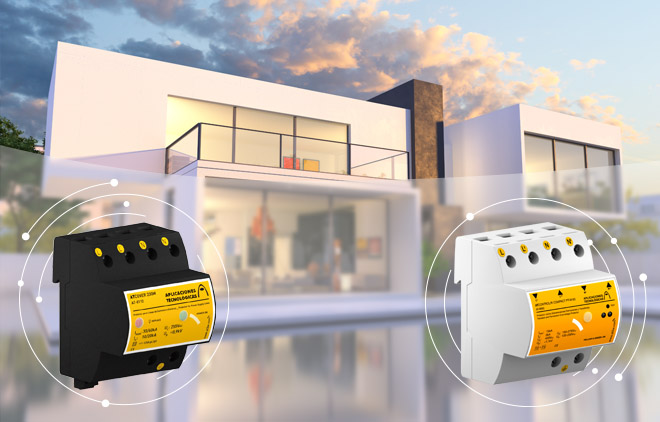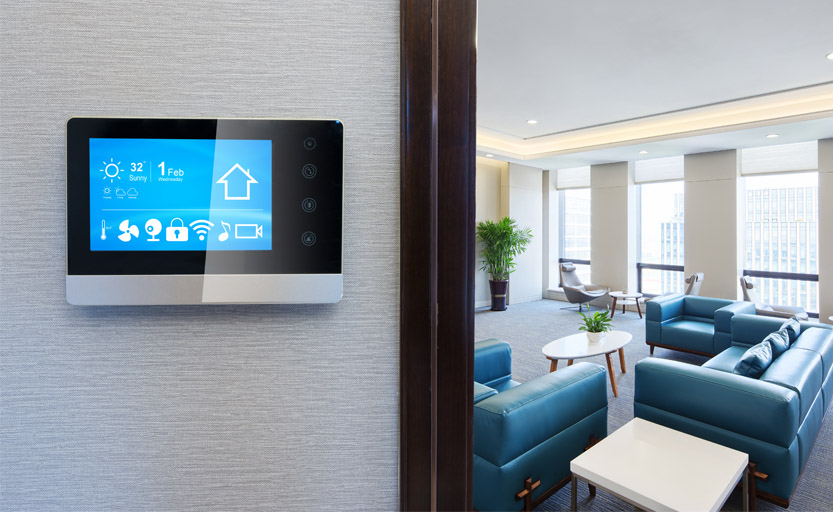More and more buildings and houses have electronic devices that allow for a more efficient and comfortable home: thermoregulation, sophisticated security systems, all kind of automations, remote controllers, energy management systems, several interconnected devices…There is no doubt in there being a trend for domotised homes which will increase, given how these technologies mean an important improvement in the quality of life.
Smart buildings and Smart Homes have an inconvenience
The advantages in the trend that Smart Cities offer are clear. However, all the technology incorporated in homes has only one inconvenience that we should consider and for which we must find a solution: the tiny electronic components of each one of the connected devices are highly sensitive to overvoltages and they breakdown easily without an adequate protection.
This inconvenience however, does not imply having to refuse to build intelligent buildings. Intelligent homes and cities contribute to time saving in day-to-day aspects and create healthier environments. It is only necessary to find a proper solution and protect these devices in an adequate manner so as to extend their life usage for a long time. An efficient protection is not difficult if we use the appropriate protectors.
What is an overvoltage and how does a surge device protect against damages from overvoltages in electronic equipment of a domotic installation?
An overvoltage is an increase of voltage produced on the electrical installation or telecommunications network. Even when the network is protected with common elements (circuit breakers and switch disconnectors) there are two types of overvoltages that require an extra protection:
- Transient overvoltages are short duration beaks of voltage. They are caused mainly due to atmospheric electrical discharges, that is to say, by lightning strikes on the structure, on the connected lines or to the proximities, causing an electromagnetic field that induces transient currents in equipment.
- Permanent overvoltages are of lower intensity, but they exceed the network voltage for longer periods of time, various cycles or even permanently. Permanent overvoltages are produced, for example, when there is a neutral conductor breakage.
A surge protection device, also known as overvoltage protector, surge suppressor or surge arrester, is a device that prevents high intensity currents from entering the electrical installation and reaching sensitive electronic components, which would be damaged or even destroyed.

To protect the connected equipment (appliances or machinery) from electrical surges in an electrical installation so that they do not suffer damages, it is necessary to install such protection. Overvoltage protectors are essential in an electrical installation to ensure safety, given how surges can cause short-circuits and fires in the electrical installation. Surge devices contribute to safety of people and equipment.
Surge protection specially designed for domotics
It is important for Smart homes to have specific surge protection within.
Transient surge protection device: ATCOVER Series
ATCOVER series are type 2+3 overvoltage suppressors, that is, they provide a coordinated protection that withstands secondary lightning effects, leaving a voltage that is not harmful to sensitive equipment. It protects both three-phase and single-phase power supply lines.
Products from the ATCOVER series offer a total protection, which covers protection between phase and neutral, phase and phase, and between phase and earth. In addition, the residual voltage is very low, which makes it an ideal protection for highly sensitive equipment such as computers, modems, etc.
Permanent overvoltage protection: ATCONTROL Series
The protection devices from the ATCONTROL series combine transient and permanent overvoltage protection.
ATCONTROL series eliminates damage risks produced by both transient and permanent overvoltages, with a single easy to installkit and minimum space required.

Surge Protectors from Aplicaciones Tecnológicas have undergone tests according to standards IEC-EN 61643-11 and UNE-EN 50550.
